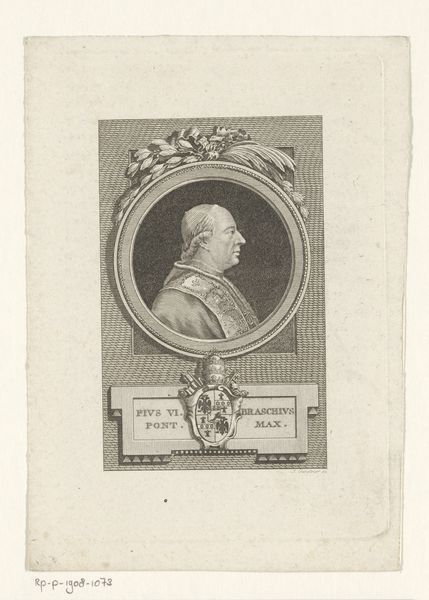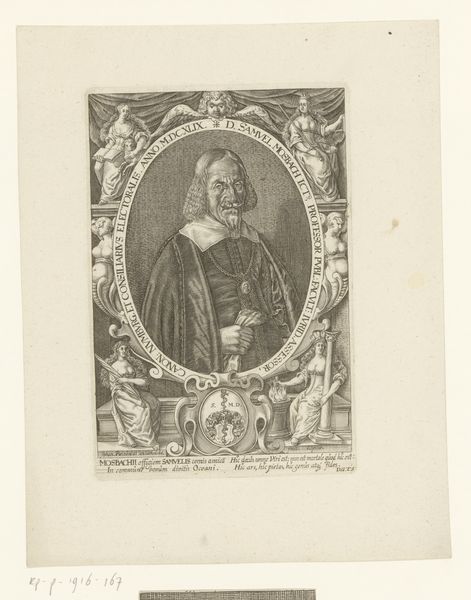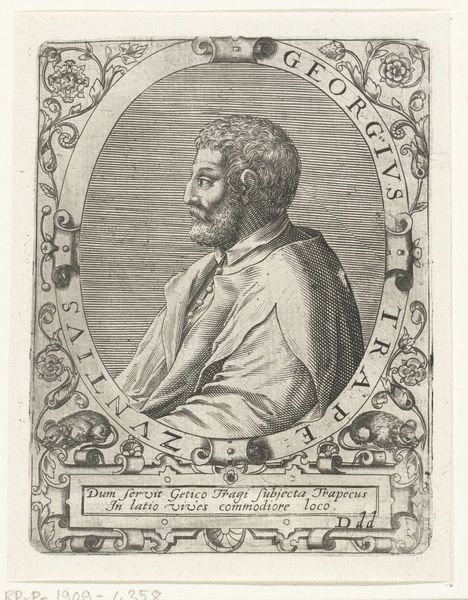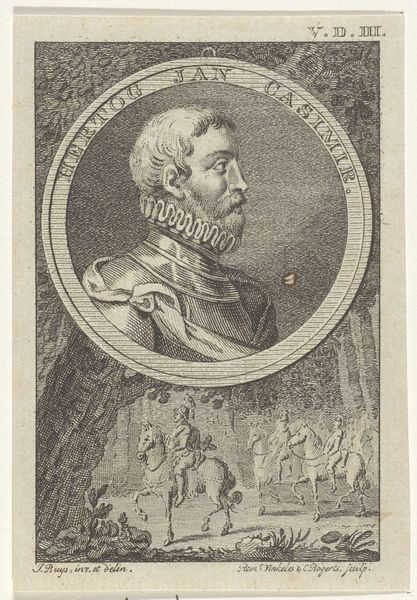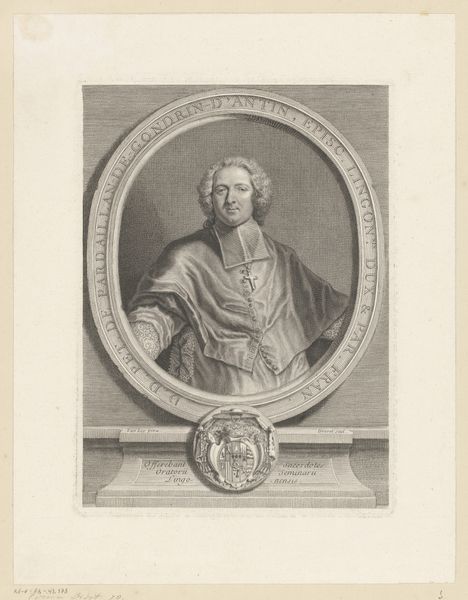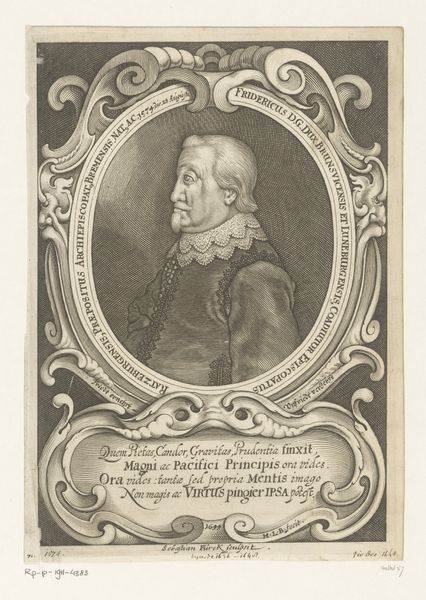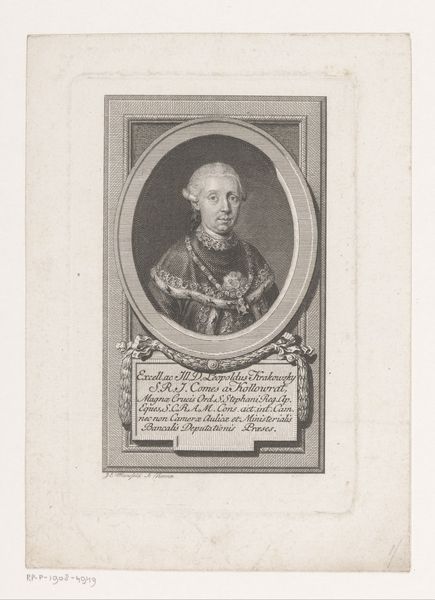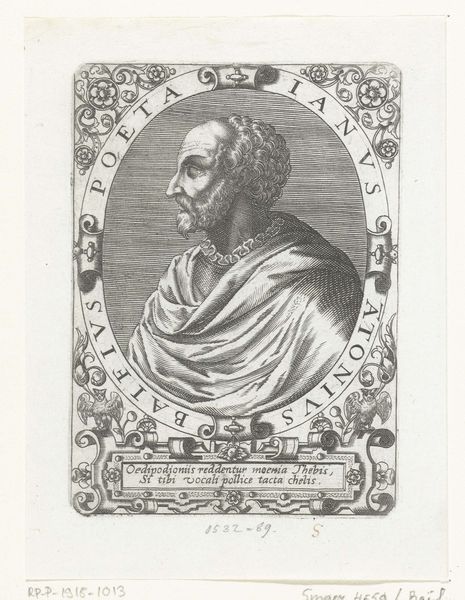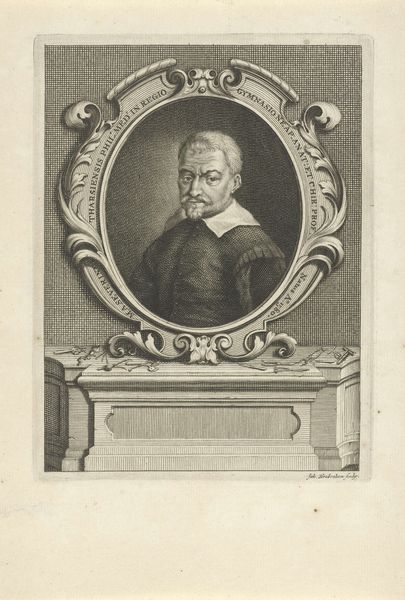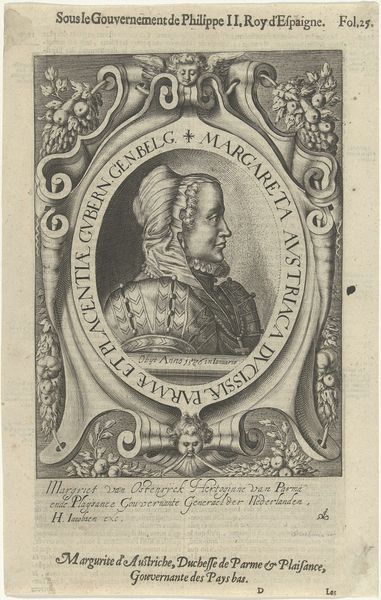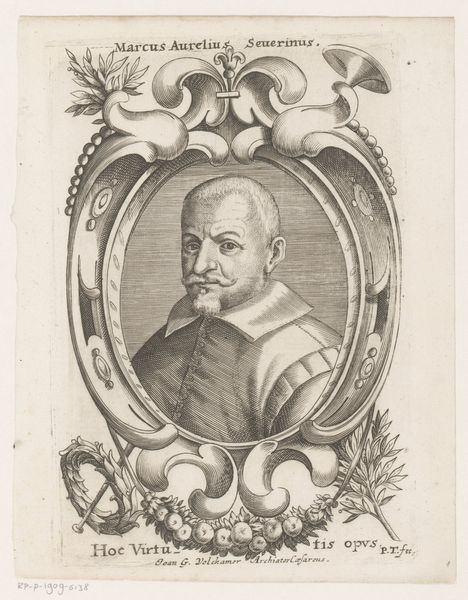
engraving
#
portrait
#
baroque
#
old engraving style
#
italian-renaissance
#
engraving
Dimensions: height 146 mm, width 118 mm
Copyright: Rijks Museum: Open Domain
Curator: Welcome. We’re looking at "Portret van Orfeo di Strasoldo", an engraving made in 1649 by Elias Widemann. You can find this at the Rijksmuseum. What do you make of it? Editor: It's a strong, severe image. The texture, the meticulous lines, everything conveys a sense of formality, a sort of rigid dignity. The oval framing of his figure almost seems to trap him. Curator: Yes, engraving, as a medium, lends itself to a kind of careful control and meticulous detail that was appreciated, even required, by elite portraiture of this era. Remember that prints such as this circulated broadly, building the public image of figures like Orfeo di Strasoldo. Editor: And that’s precisely the point. It’s an image of power carefully constructed, right down to the way his name, titles and 1649 date are emblazoned above his head within the decorative border, almost sanctifying his image. Is it meant to impress more than express? Curator: Portraits in the Baroque era frequently fulfilled such a role. Think about the relationship between powerful families, military leadership, and patronage of the arts; images such as these played a pivotal role in shaping perceptions. The question of individual expression barely arises in these works. It is entirely a calculated demonstration of power. Editor: Precisely! We can consider who had access to these images, who controlled their dissemination, and what this reinforces about hierarchies in 17th-century European society. This engraving, with its crisp lines, almost perfectly symmetrical design, feels inherently bound to that rigid structure of society. Curator: It's easy to critique that formality, yet it’s impossible to deny the artistic and technical skill at work in Widemann's approach. Consider the level of control he displays working with the burin, an extremely difficult medium. Editor: Certainly, but that mastery of technique is inextricably tied to the purpose of glorifying and solidifying authority. Even the 'italian-renaissance' artistic influence contributes to its air of aristocratic elegance and inherited power, right? Curator: Well, considering its date we might rather connect this engraving to the Baroque. Nevertheless, focusing on these pieces is a necessity, and discussing this type of work brings new understandings about societal image-making to light. Editor: Agreed. Analyzing this further gives us crucial insight into the cultural function of art throughout history. Hopefully this sheds light on art’s entanglement with questions of social order.
Comments
No comments
Be the first to comment and join the conversation on the ultimate creative platform.
